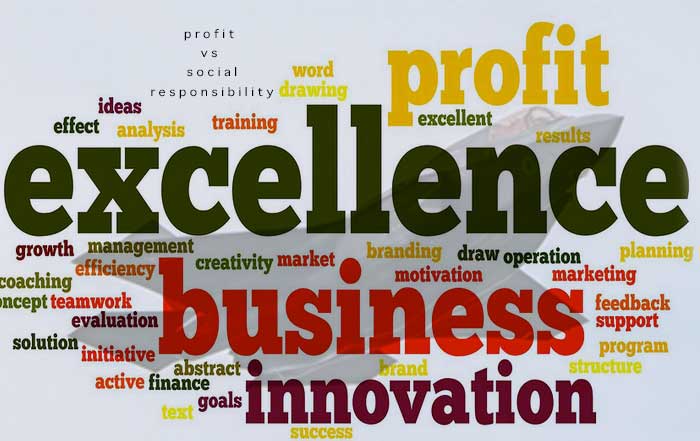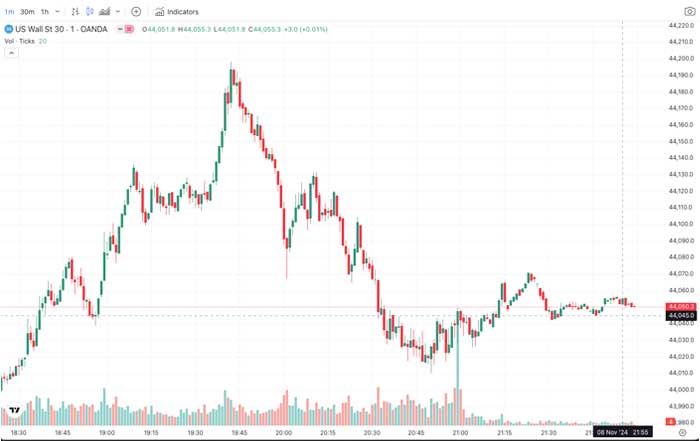In every era of business, there are leaders who redefine industries, challenge conventional thinking, and inspire the next wave of innovation. The twenty-first century, particularly the 2020s, has been marked by an accelerated pace of technological transformation led by bold founders who not only saw opportunities where others saw limitations but also created new markets that now shape the global economy. These individuals operate at the intersection of ambition, creativity, and resilience, pushing forward business models that merge artificial intelligence, blockchain, sustainable technologies, and platform economies into daily life.
For the audience of bizfactsdaily.com, understanding these founders is not merely a look at success stories but a strategic analysis of how technological disruption impacts global finance, investment, employment, stock markets, and the very fabric of society. Their journeys illuminate patterns: risk-taking during uncertain times, leveraging innovation as a competitive edge, and building ecosystems rather than isolated companies.
This article takes an in-depth look at some of the most influential founders of the past two decades, analyzing their impact on industries from AI and fintech to global commerce and sustainability, while highlighting the lessons business leaders worldwide can draw from their strategies.
Elon Musk: The Icon of Bold Vision
Few founders embody disruption more dramatically than Elon Musk, whose companies have challenged entire industries simultaneously. From Tesla redefining the automotive and energy sector, to SpaceX revolutionizing aerospace, Musk has created businesses that thrive at the edge of feasibility. His ventures extend to Neuralink, seeking to merge human intelligence with machines, and The Boring Company, which envisions underground transportation solutions for congested cities.
Musk’s disruptive approach stems from his willingness to take existential risks. In 2008, both Tesla and SpaceX were near collapse, yet his decision to reinvest personal capital and secure critical contracts ensured survival. Today, Tesla is not only the world’s leading electric vehicle maker but also a major force in battery storage and renewable energy. The company’s gigafactories, sprawling across the United States, China, and Germany, serve as testaments to how infrastructure and scale accelerate technological adoption.
Musk’s journey demonstrates the interplay between personal charisma, technological ambition, and financial resilience. His bold stance often influences stock markets as investors watch his moves closely. Learn more about how technology shapes global business trends.
Jeff Bezos: The Master of Long-Term Scaling
If Musk represents bold risk-taking, Jeff Bezos represents disciplined scaling. The founder of Amazon built one of the world’s most influential companies by prioritizing long-term vision over quarterly profits. From humble beginnings as an online bookstore in 1994, Amazon expanded into cloud computing with AWS, global logistics, streaming with Prime Video, and AI-powered retail ecosystems.
Bezos’s greatest disruption lies in his philosophy: “customer obsession” as a guiding principle. Amazon consistently reinvested earnings into infrastructure, creating efficiencies in supply chains and logistics unmatched by competitors. This relentless focus transformed the retail industry, forcing brick-and-mortar giants like Walmart and Target to rethink business models.
Moreover, AWS (Amazon Web Services) fundamentally reshaped the digital economy. By providing scalable cloud infrastructure, AWS enabled startups and multinational corporations alike to innovate without prohibitive upfront costs. Today, it underpins much of the internet, empowering sectors from banking to healthcare.
Bezos also influenced work culture, popularizing data-driven decision-making and operational rigor. His story underscores that disruption often comes not from flashy ideas but from relentless execution and reinvestment. Learn more about global business dynamics shaped by such strategies.
Satya Nadella: Transforming Legacy into Innovation
When Satya Nadella took over as CEO of Microsoft in 2014, the company was seen as a legacy giant struggling to adapt to cloud-first, mobile-first realities. Within a decade, Nadella transformed Microsoft into one of the most innovative players in the digital economy.
The centerpiece of this turnaround is Azure, Microsoft’s cloud platform, which today competes head-to-head with AWS. Nadella’s vision extended beyond infrastructure: he positioned Microsoft at the forefront of AI adoption, securing early partnerships with OpenAI and embedding intelligent capabilities across Office 365, Dynamics, and LinkedIn.
Unlike founders who created companies from scratch, Nadella’s disruptive leadership demonstrates how transformation within a large organization can rival startup agility. His emphasis on empathy, culture shift, and collaboration rejuvenated Microsoft’s image, making it relevant to younger generations of developers and business leaders.
The success also carries geopolitical and economic implications, as Microsoft became a strategic partner for governments and enterprises navigating cybersecurity, AI governance, and cloud sovereignty. For companies exploring digital transformation in 2025, Nadella’s example highlights that disruption is not limited to startups but also possible for legacy enterprises through visionary leadership.
Mark Zuckerberg: From Social Network to Metaverse Pioneer
Mark Zuckerberg began as the founder of Facebook, but his legacy is increasingly tied to the evolution of Meta. In its early years, Facebook disrupted communication by connecting billions of users globally, monetizing through targeted advertising that reshaped marketing strategies across industries.
The company’s acquisition of Instagram and WhatsApp ensured dominance in digital social interactions, while Oculus signaled early ambitions in virtual reality. By 2021, Zuckerberg’s pivot to the Metaverse under the Meta brand was one of the boldest strategic moves of the decade. While still in development, Meta’s investments in VR, AR, and AI-driven social platforms highlight the intersection of entertainment, commerce, and future workspaces.
Zuckerberg embodies a founder who consistently reinvents his company to stay ahead of consumer trends. Despite criticisms over data privacy, political influence, and regulatory pressures, his persistence ensures that Meta remains central to debates on digital ethics, online governance, and the future of global communities.
The lesson from Zuckerberg is clear: disruption requires both continuous reinvention and the courage to pivot entire business models, even at the risk of alienating short-term investors. Learn more about global news shaping tech transitions.
Disruptive Founders Interactive Timeline
Select a founder to learn more
Click the play button to start the interactive timeline or click on any founder's card to explore their impact on global business and innovation.
Jack Ma: The Pioneer of Digital Commerce in Asia
In the late 1990s, China was at the cusp of economic modernization but lacked the digital infrastructure to support e-commerce. Jack Ma, the founder of Alibaba Group, saw this gap and built an online marketplace that democratized access to global trade for millions of small businesses. His vision of empowering entrepreneurs, especially in rural and developing regions, reshaped the economic landscape of China and influenced digital commerce globally.
Alibaba’s platforms, from Taobao and Tmall to Alipay and Ant Financial, created a comprehensive ecosystem that merged retail, finance, logistics, and cloud computing. This model not only challenged Western giants like Amazon but also gave rise to a new kind of digital economy where entire industries—from agriculture to manufacturing—could scale globally.
Jack Ma’s legacy also lies in fostering entrepreneurial culture across Asia. Through Alibaba’s ecosystem, small manufacturers gained access to international buyers, while mobile payments through Alipay redefined consumer finance in China. By 2025, the ripple effects of his vision are evident in the widespread adoption of super apps in Southeast Asia, from Singapore to Thailand, where mobile-first platforms now dominate financial and retail interactions.
Despite regulatory challenges in recent years, Jack Ma’s disruptive influence remains a case study in how digital commerce can transform societies and bridge global markets. Entrepreneurs looking to expand across Asia still analyze his strategies as a blueprint for scaling digital platforms in emerging economies. Learn more about the evolution of global business trends and cross-border trade.
Jensen Huang: Powering the AI Revolution
When history reflects on the foundations of artificial intelligence in the 21st century, Jensen Huang, co-founder and CEO of NVIDIA, will be remembered as one of the central figures. Initially known for creating graphic processing units (GPUs) for gaming, Huang foresaw the broader potential of GPUs in scientific computing and machine learning. His foresight placed NVIDIA at the core of the AI revolution.
By the 2020s, NVIDIA’s GPUs became the backbone of AI model training, powering innovations in natural language processing, computer vision, healthcare diagnostics, autonomous vehicles, and advanced robotics. With the explosion of generative AI in 2023 and beyond, NVIDIA’s role expanded further, making the company indispensable for startups and enterprises alike.
Huang’s disruption lies not only in technology but also in ecosystem building. NVIDIA’s CUDA platform created a developer-friendly environment that encouraged adoption across industries, while partnerships with Microsoft, Google, and Tesla solidified its role as a cornerstone of technological advancement. The company’s influence is so significant that fluctuations in NVIDIA’s supply and product launches often impact stock markets worldwide.
For global business leaders, Huang’s journey illustrates the importance of identifying second-order applications of technology. What began as a gaming tool became the fuel for artificial intelligence, demonstrating how visionary leadership can transform a company’s purpose and the trajectory of entire industries. Learn more about how artificial intelligence is reshaping the global economy.
Vitalik Buterin: Redefining Trust Through Blockchain
In 2013, Vitalik Buterin, then a young programmer, introduced the concept of Ethereum, a blockchain platform that expanded the possibilities of decentralized technology beyond cryptocurrency. Unlike Bitcoin, which primarily served as a digital store of value, Ethereum offered a programmable blockchain where developers could build decentralized applications (dApps) and smart contracts.
Buterin’s vision disrupted not only the financial sector but also created entirely new industries such as decentralized finance (DeFi), non-fungible tokens (NFTs), and tokenized governance. By 2025, Ethereum remains a dominant force in blockchain innovation, powering applications in crypto trading, supply chain transparency, digital identity, and even global voting systems.
What makes Buterin unique among disruptive founders is his open-source ethos. Unlike many corporate-driven models, Ethereum’s development thrives on community contributions and decentralized governance, showcasing how innovation can emerge outside traditional hierarchical structures. This approach has inspired ecosystems of decentralized autonomous organizations (DAOs) and reshaped how investors, founders, and regulators think about economic systems.
Buterin’s influence extends into public discourse on ethics, sustainability, and governance. With Ethereum’s transition to proof-of-stake, he emphasized energy efficiency in blockchain operations, aligning with global priorities for sustainable innovation. For business leaders navigating the complexities of digital finance, his journey provides insights into balancing disruptive potential with societal responsibility. Learn more about evolving trends in economy and digital transformation.
Susan Wojcicki: Building the Digital Media Empire
When Susan Wojcicki took charge as CEO of YouTube in 2014, the platform was already a major player in online video. Under her leadership, YouTube evolved into one of the most powerful media companies in the world, reshaping entertainment, education, and marketing globally.
Wojcicki’s disruption lies in her ability to merge technology with content creation. She oversaw the introduction of YouTube’s monetization programs, enabling millions of creators to build careers and businesses on the platform. This creator economy redefined employment, as individuals across the globe—from the United States to Brazil, India, and Africa—could reach audiences without traditional gatekeepers.
Beyond entertainment, YouTube became a critical tool for education, professional development, and political discourse. Platforms like YouTube Learning empowered students, while global brands leveraged video marketing strategies to engage audiences. Wojcicki also guided YouTube through regulatory challenges, content moderation debates, and the integration of AI-driven recommendation systems that influenced how billions consumed information daily.
Her leadership exemplifies how disruption often emerges from platform economics. By creating value not only for the company but also for its users, she built an ecosystem where creators, advertisers, and audiences coexist. This decentralized model remains a cornerstone of the broader platform economy, influencing industries from streaming to e-learning. For more on emerging founders shaping global innovation, see the dedicated analysis.
Reed Hastings: Streaming as the New Global Television
The way the world consumes entertainment was permanently disrupted by Reed Hastings, the co-founder of Netflix. What started as a DVD rental service in the late 1990s evolved into the dominant global streaming platform, fundamentally altering media production, distribution, and audience behavior.
Hastings’ greatest disruption came from his foresight in pivoting from physical rentals to streaming at a time when internet bandwidth was only beginning to support video delivery. This bold move positioned Netflix not only ahead of traditional media companies but also in direct competition with Hollywood. By investing billions into original content, Netflix transformed from a distributor into a global content powerhouse, producing award-winning films, documentaries, and series across languages and cultures.
The streaming model introduced by Netflix forced competitors like Disney, Warner Bros. Discovery, and Amazon Prime Video to follow suit, igniting the so-called “streaming wars.” Beyond entertainment, Netflix disrupted advertising and marketing models, introducing subscription-based, ad-free experiences that reshaped consumer expectations across industries.
For business leaders, Hastings’ journey illustrates the power of anticipating technological shifts before they become mainstream. His legacy also underscores the importance of scaling globally, as Netflix today operates in over 190 countries, shaping cultural narratives and providing opportunities for local creators to reach international audiences. Learn more about disruptive forces in technology and global media industries.
Daniel Ek: Reinventing Music Through Streaming
While Hastings reshaped television, Daniel Ek, co-founder and CEO of Spotify, redefined the music industry. At a time when piracy threatened record labels and artists alike, Ek’s streaming model offered a legal, scalable alternative that satisfied consumer demand for instant access while generating revenues for rights holders.
Spotify disrupted the traditional music business by shifting from ownership to access. Listeners no longer needed to buy albums or individual songs; instead, they gained access to vast catalogs for a monthly subscription. This fundamentally altered how artists, labels, and audiences interacted, making data-driven personalization and playlist curation central to music discovery.
By 2025, Spotify’s influence extends well beyond music into podcasts, audiobooks, and AI-driven audio experiences. Its global dominance has sparked debates about artist compensation and platform equity, but it remains a critical force in shaping modern culture. Ek’s disruption demonstrates how platform businesses can balance consumer convenience with industry sustainability, though not without challenges.
Spotify also illustrates the importance of European entrepreneurship on the global stage, proving that transformative ideas can emerge outside Silicon Valley. For entrepreneurs and investors, Ek’s journey emphasizes the strategic value of user-centric platforms combined with continuous innovation in monetization. For deeper insights into industry-shaping founders, explore innovation case studies.
Anne Wojcicki: Disrupting Healthcare with Consumer Genomics
In an era dominated by digital platforms, Anne Wojcicki, co-founder of 23andMe, took disruption into the realm of healthcare and genetics. By offering affordable DNA testing kits directly to consumers, 23andMe broke barriers in an industry traditionally controlled by medical institutions.
Wojcicki’s innovation allowed millions to explore ancestry, genetic health risks, and inherited traits without needing a physician intermediary. This consumer-centric model empowered individuals to take greater control over their health and wellbeing while also advancing genetic research through anonymized data sharing.
23andMe’s partnerships with pharmaceutical companies further illustrate how disruptive founders can merge consumer data with large-scale medical innovation. By integrating genetic insights into drug discovery and personalized medicine, Wojcicki positioned the company at the cutting edge of biotech.
Her leadership also highlights the ethical responsibilities of disruption. Questions around data privacy, consent, and genetic discrimination remain central to the conversation, underscoring that disruptive innovation often operates in regulatory gray areas. Nevertheless, Anne Wojcicki’s work reflects how technology can make previously inaccessible science available to the masses, challenging the structures of healthcare and pharmaceutical industries. For readers of bizfactsdaily.com, this serves as a case study in how sustainable innovation intersects with ethics and regulation.
Patrick Collison: Infrastructure for the Digital Economy
While many founders are celebrated for consumer-facing products, Patrick Collison, co-founder of Stripe, represents disruption at the infrastructure level. Stripe’s payment processing platform simplified online transactions, enabling millions of businesses worldwide to scale rapidly without the complexity of building financial infrastructure from scratch.
Collison’s vision was to create the “economic infrastructure for the internet.” By abstracting away the complexity of global payments, compliance, and fraud detection, Stripe empowered startups, freelancers, and multinationals alike to participate in the digital economy seamlessly. By 2025, Stripe has become one of the most influential fintech companies, with valuations and influence rivaling traditional banks.
Stripe’s disruption lies in its role as an enabler. It does not merely serve businesses; it underpins the digital commerce ecosystem, powering marketplaces, subscription platforms, and emerging models like creator economies. Collison’s leadership also demonstrates the importance of balancing innovation with regulation, as Stripe has expanded globally into markets with diverse financial systems and legal frameworks.
For entrepreneurs, Stripe represents how building foundational tools can be as disruptive as consumer products. The company’s trajectory also signals how financial technology is reshaping global investment, employment, and entrepreneurship. Learn more about the intersection of banking and economy in today’s digital landscape.
Whitney Wolfe Herd: Redefining Social Connections
Whitney Wolfe Herd, the founder of Bumble, represents one of the most significant disruptions in the global tech and social media landscape. After leaving Tinder, where she played a key role in developing the swipe-based dating model, Wolfe Herd envisioned a platform that gave women greater control in digital interactions. Bumble’s defining feature—requiring women to make the first move in heterosexual matches—reshaped online dating by addressing issues of harassment and gender imbalance.
Beyond dating, Bumble has grown into a social networking ecosystem that includes friendship (Bumble BFF) and professional networking (Bumble Bizz), positioning itself as a community-driven alternative to traditional social media platforms. This expansion demonstrates Wolfe Herd’s ability to anticipate evolving digital needs and diversify beyond core offerings.
Her leadership also made history when Bumble went public in 2021, making Wolfe Herd the youngest female founder to take a company public in the United States. By 2025, Bumble continues to thrive as part of the broader “relationship tech” industry, emphasizing inclusivity, safety, and women’s empowerment.
Wolfe Herd’s disruption illustrates how purpose-driven platforms can carve significant market share even in competitive spaces. For readers of bizfactsdaily.com, her journey highlights the convergence of employment, technology, and culture in redefining digital communities.
Brian Chesky: The Architect of the Sharing Economy
The co-founder of Airbnb, Brian Chesky, reimagined how people travel and experience accommodation. By allowing homeowners to rent out spare rooms and properties, Chesky created the foundation of the sharing economy, transforming not only tourism but also real estate, urban development, and global labor markets.
Airbnb’s disruption lies in its ability to unlock dormant assets—unused homes and apartments—and convert them into income-generating opportunities. This model provided travelers with affordable, authentic alternatives to hotels while giving homeowners access to new streams of income. By 2025, Airbnb’s presence spans over 220 countries, influencing everything from housing affordability debates in New York and Berlin to rural tourism growth in Thailand and South Africa.
Chesky’s leadership during crises also underscores resilience. When the COVID-19 pandemic decimated global travel in 2020, Airbnb faced near-collapse. Chesky’s decision to streamline operations, pivot toward longer-term stays, and refocus on community-driven experiences ensured survival and a strong rebound post-pandemic.
For global business leaders, Chesky’s disruption demonstrates the power of rethinking asset utilization and the importance of agility in navigating shocks. Learn more about how business models like the sharing economy continue to shape global industries.
Zhang Yiming: Shaping Global Attention with ByteDance
Zhang Yiming, the founder of ByteDance, created one of the most influential media platforms of the 21st century: TikTok. By leveraging AI-driven recommendation algorithms, TikTok redefined content discovery, creating a highly engaging and addictive user experience that captured the attention of billions globally.
ByteDance’s disruption is multifaceted. On one hand, it restructured the entertainment industry by giving ordinary users the tools to create viral content. On the other, it transformed digital advertising by enabling micro-targeting at scale. TikTok’s algorithm-driven feed challenged traditional social networks like Facebook, YouTube, and Instagram, sparking global competition in short-form video.
Zhang’s leadership also highlights the globalization of tech disruption. TikTok became the first Chinese app to dominate Western markets at scale, influencing cultural trends in the United States, Europe, and beyond. Despite regulatory battles over data privacy and geopolitical concerns, its impact remains undeniable.
For companies, TikTok exemplifies the growing importance of algorithmic personalization in marketing. For entrepreneurs, Zhang’s story underscores how technical innovation combined with cultural insight can reshape global industries in unprecedented ways.
Reshma Saujani: Championing Inclusive Entrepreneurship
While many founders focus on building companies, Reshma Saujani, founder of Girls Who Code, has disrupted the entrepreneurial and employment pipeline itself. By creating one of the most impactful non-profits in technology, Saujani addressed the gender gap in computer science education, inspiring millions of young women worldwide to pursue careers in coding and technology.
Her work extends beyond education. Saujani’s advocacy for equity in employment, inclusive entrepreneurship, and supportive policies for working mothers has influenced both corporate and government agendas. In 2022, her push for the “Marshall Plan for Moms” highlighted the need for systemic reforms in childcare and workplace policies, further positioning her as a global leader in inclusive economic innovation.
By 2025, Girls Who Code alumni have entered top universities, leading tech firms, and even launched startups of their own, multiplying Saujani’s impact across industries. Unlike traditional tech founders, her disruption comes from shaping talent pipelines and ensuring that future innovation is more diverse, equitable, and representative of society.
For business leaders, her journey underscores that disruption is not just technological—it is also cultural and structural. For readers of bizfactsdaily.com, her story connects directly to the themes of employment, innovation, and sustainable development.
Larry Page and Sergey Brin: The Search Revolutionaries
No exploration of disruptive founders would be complete without Larry Page and Sergey Brin, co-founders of Google. What began as a research project at Stanford University in the late 1990s evolved into the world’s most influential search engine, redefining how humans access and interpret information. Their algorithm, PageRank, not only made the internet navigable but also created the foundation for an advertising empire that fuels much of the digital economy.
Page and Brin’s disruption was not limited to search. Under their leadership, Google expanded into Android, YouTube, Maps, Gmail, and Google Cloud, creating an ecosystem that touches nearly every aspect of digital life. Their decision to restructure under the Alphabet umbrella in 2015 further demonstrated visionary leadership, allowing diverse projects in AI, self-driving cars (Waymo), and healthcare (Verily) to flourish.
By 2025, Google remains a dominant force in AI innovation, quantum computing, and sustainability initiatives, influencing global employment, education, and economic development. The co-founders’ legacies extend far beyond technology: they created a model of scalability, diversification, and research-driven growth that continues to guide entrepreneurs worldwide. For readers of bizfactsdaily.com, their journey embodies the ultimate fusion of technology, innovation, and global business strategy.
Sam Altman: Democratizing Artificial Intelligence
While Larry Page and Sergey Brin reshaped the internet, Sam Altman, CEO of OpenAI, represents the forefront of artificial intelligence in the 2020s. Altman’s mission is to ensure that AI benefits all of humanity, a vision that blends technological disruption with deep ethical considerations.
OpenAI’s work, particularly the development of ChatGPT, catalyzed the global AI boom in the early 2020s. Altman’s leadership disrupted industries by making advanced language models accessible to the public, transforming education, healthcare, marketing, and even legal services. The ripple effects were immediate: businesses adopted AI for productivity, while governments grappled with regulatory frameworks.
Altman also embodies a new archetype of founder—balancing commercial growth with societal responsibility. His advocacy for AI safety, governance, and transparency demonstrates that modern disruption involves not only creating groundbreaking technology but also shaping public policy and ethical norms.
For global markets, OpenAI’s innovations highlight the transformative power of AI to create jobs, displace roles, and redefine productivity. For investors, Altman’s vision reflects the immense potential of AI-driven economies. To explore these dynamics further, see insights into artificial intelligence shaping employment and innovation.
Melanie Perkins: Democratizing Design
Melanie Perkins, co-founder and CEO of Canva, disrupted the world of design by making professional-quality tools accessible to everyone. Before Canva, design software was often expensive, complex, and limited to professionals. Perkins envisioned a platform that allowed anyone, regardless of skill level, to create compelling visuals for presentations, social media, marketing campaigns, and business documents.
By 2025, Canva has become a staple tool for entrepreneurs, small businesses, educators, and even large corporations. Its collaborative, cloud-based model has democratized design globally, enabling creative expression in regions from Southeast Asia to South America. In doing so, Canva empowered millions of users who were previously excluded from high-end design tools, lowering barriers to entry for digital entrepreneurship.
Perkins’ disruption lies in recognizing the convergence of simplicity, accessibility, and global collaboration. Canva has become not only a design platform but also a hub for brand management, workplace communication, and marketing resources, putting it in competition with giants like Adobe and Microsoft.
Her story also highlights the growing significance of female founders in shaping global tech ecosystems. Perkins’ success reflects a broader shift toward inclusive innovation and serves as inspiration for entrepreneurs navigating competitive digital markets. Learn more about transformative journeys in founders shaping creative economies.
Integrating Lessons from the Disruptors
When analyzing these founders collectively—Musk, Bezos, Nadella, Zuckerberg, Ma, Huang, Buterin, Wojcicki, Hastings, Ek, Wojcicki (Anne), Collison, Wolfe Herd, Chesky, Zhang, Saujani, Page, Brin, Altman, and Perkins—several themes emerge that are directly relevant to bizfactsdaily.com readers seeking insight into disruption and strategy in 2025.
Ecosystem Thinking: The most influential founders did not stop at building companies; they built ecosystems. Whether it is Bezos with Amazon’s platform, Huang with NVIDIA’s CUDA, or Buterin with Ethereum’s open-source community, ecosystems multiply innovation.
Globalization of Innovation: Disruption is no longer confined to Silicon Valley. From Zhang Yiming in China to Daniel Ek in Sweden and Melanie Perkins in Australia, global founders now shape industries with equal force.
Balancing Ethics and Growth: Figures like Altman, Wojcicki, and Saujani illustrate that disruption increasingly requires grappling with ethics, governance, and social impact.
Resilience and Adaptability: Founders like Chesky and Musk demonstrate that survival often depends on the ability to adapt strategies in the face of crises.
Democratization of Access: Perkins, Buterin, and Wolfe Herd highlight how giving power to ordinary people—whether in design, blockchain, or social networking—can unleash enormous economic value.
The Future of Maverick Master Disruption
As 2025 unfolds, the role of disruptive founders continues to expand. They are not merely business leaders but architects of new realities, influencing how people live, work, and connect globally. Their companies affect economy, investment, and stock markets while shaping the cultural and ethical frameworks of the digital age.
For business leaders, policymakers, and investors, studying these individuals is not an exercise in admiration but a roadmap for navigating complexity. Their journeys provide a blueprint for risk-taking, scaling, global expansion, and balancing disruption with responsibility.
Ultimately, the story of famous founders who lead the way is the story of humanity’s relentless pursuit of progress. And as new waves of innovators emerge—from quantum computing to sustainable technologies—the lessons from today’s disruptors will guide the next generation in building the future.








